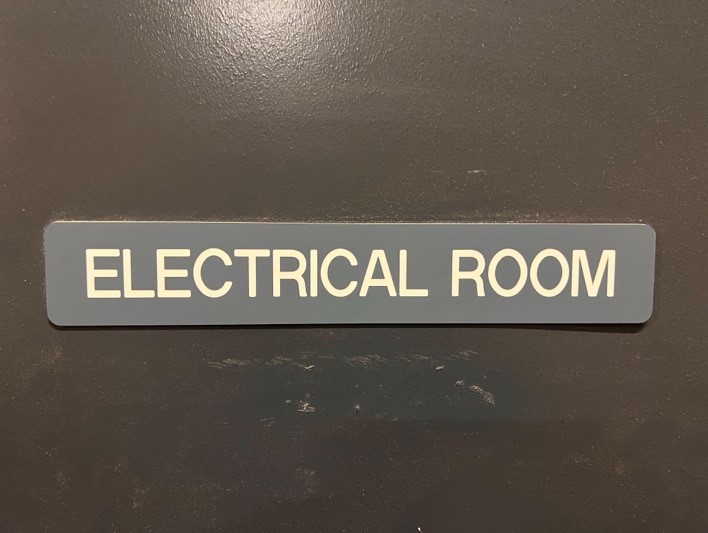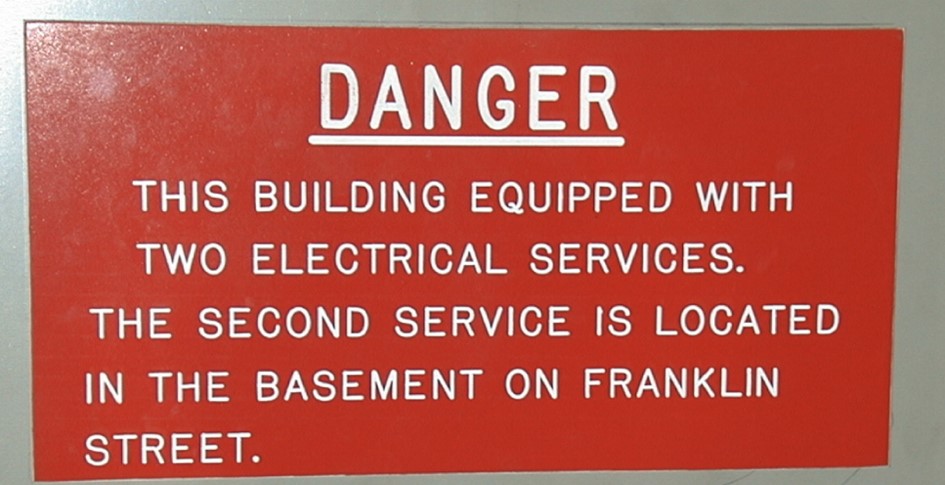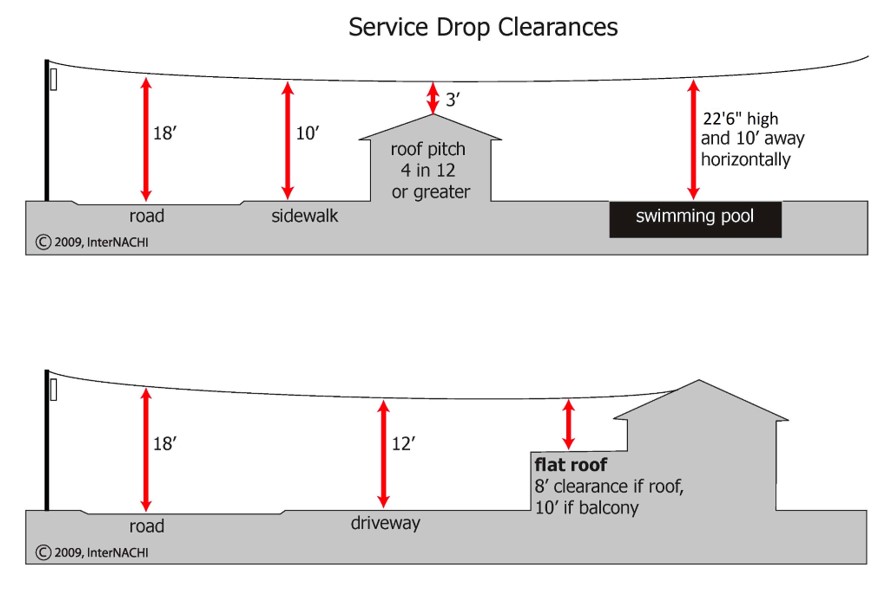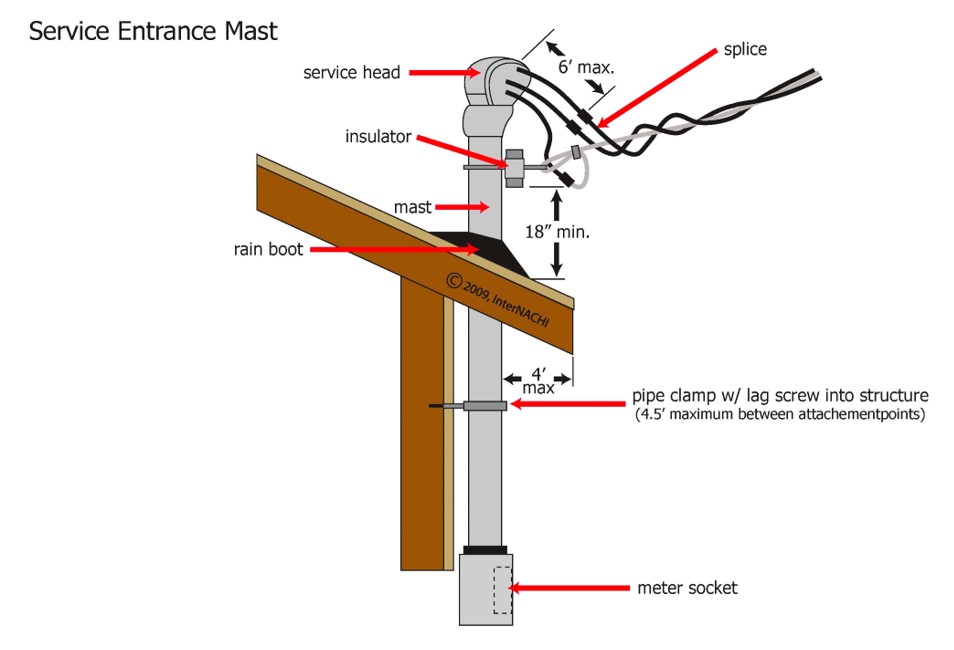Electrical service refers to the conductors, materials, and equipment that transfer power from the utility system to the wiring system that supplies the subject property with electrical power.
Commercial buildings should only be supplied by one electrical service. This generally prohibits the installation of more than one set of service conductors in a building. An exception to this rule is for multiple-occupancy buildings. For example, a property that initially had multiple occupancies will likely contain several services, even if a single occupant takes over the property. As a result, commercial property inspectors will come across properties with various service quantities and locations, depending on the occupancy history and the building’s compliance with electrical codes.
 The electrical service can sometimes be tricky to locate. It is often found on an interior wall directly behind the exterior wall where the incoming electric meter and enclosure is located. For example, suppose the meter is on an exterior wall located at the southwest corner of the building. In that case, the main electrical service could be on the interior side of that particular wall. If the service is underground, the main electrical service could be anywhere in the building. In many cases, it is found in a room labeled “Electrical Room” or “Mechanical Room.”
The electrical service can sometimes be tricky to locate. It is often found on an interior wall directly behind the exterior wall where the incoming electric meter and enclosure is located. For example, suppose the meter is on an exterior wall located at the southwest corner of the building. In that case, the main electrical service could be on the interior side of that particular wall. If the service is underground, the main electrical service could be anywhere in the building. In many cases, it is found in a room labeled “Electrical Room” or “Mechanical Room.”
Depending on the size and location of the electrical service, the system may be inside a locked enclosure made of chain-link fencing, or in a finished room. Commercial property inspectors may need to coordinate access by securing a key in order to perform their inspection.

Label for location of electrical service
Electrical Service Signage and Labels
If a building has more than one service, a sign or label must be present at each service indicating the total number and location for each one. The signage prevents electricians and firefighting personnel from believing that all services are turned off at a signal location before performing their work. Commercial property inspectors should document all service location information in their inspection report.
Service Drop/Lateral Clearance
Commercial property inspectors should inspect the service drop or lateral. The service drop to a building can be provided underground or overhead. An underground service will be difficult to view, but an overhead service is readily visible. Like other components in the electrical system, the overhead service drop has specific clearances that must be adhered to. The same clearance requirements for residential services apply to commercial properties. The most common issues include the clearance for driveways, alleys, parking areas, flat roofs, and roadways.


Inspection of the Service Drop/Lateral
Inspecting the service drop and lateral should include:
- the mast and the conduit connection at the mast. The service drop must be fully protected and free of damage and corrosion. Wires with missing or damaged sheathing (which exposes the wires to the weather), and damage from ultraviolet light are common defects.
- the service weatherhead. This component protects the interior from the weather. Therefore, the wires should travel upward into the weatherhead so as not to allow rainwater and other moisture into the service conduit.
- the drip loop. This is designed to prevent rainwater and other moisture from entering the weatherhead. The drip loop should also be at least 18 inches away from the roof, and 3 feet from any operable window or door.
- insulators. These are the separation between the service wires and various other elements in the system. They’re designed to act as shields to prevent damaged cables and other hazards from coming into contact with the mast or internal system.
- the support connection and cables. These cables should guide and secure the service wires to the masthead and building. They lead from the utility pole to the mast or building, and should follow the same clearances as the lateral service wires.
- the lateral service wires. When examining the lateral service wires, the inspector should check the number of wires providing service to the building. If there are only two wires, the service may be a single-phase system. If three or four wires serve the building, the service may be a 3-phase system. Matching the number of wires in the service with the panel descriptions will verify the service, provided that it matches the labeling.
Service Grounding
The inspector should also inspect the service’s grounding and bonding. Overhead services should maintain a path to ground. This would be visible at the meter and meter enclosure. Where there is an overhead service, there should be an exterior ground path. This should be visible through a wire from the meter or meter enclosure directly to a driven ground rod.
Conclusion
All commercial buildings have an electrical service. However, the quantity and location will vary depending on occupancy and the building’s compliance with code. According to the Section 6.5.8 of the ComSOP, the inspector should inspect the service drop/lateral for proper clearances, the service entrance conductors, and the service grounding and bonding, and report any observed deterioration of the conductor insulation or cable sheath. Proper labeling of the electrical service can help guide the inspector through this portion of the inspection.
Article Written By: Rob Claus, CMI®
Additional Resources for Commercial Property Inspectors:


